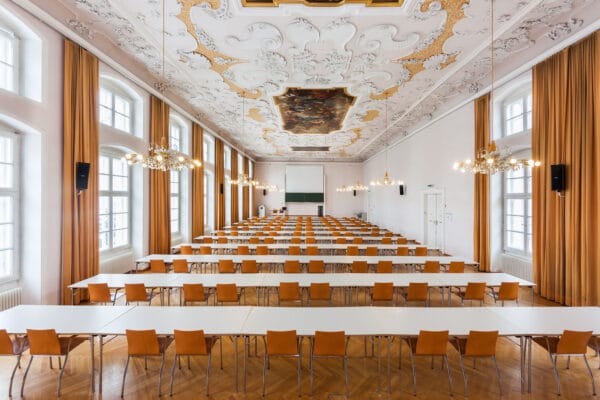
NAME:
Theologie - MS
BUILDING:
Theologie
FLOOR:
2
TYPE:
Lecture Room
CAPACITY:
108
ACCESS:
Only Participants
EQUIPMENT:
Beamer, PC, WLAN (Eduroam), Overhead, Flipchart, Blackboard, Handicapped Accessible, LAN, Microphones, Sound System
The tower house is an architectural tipology that has played a fundamental role in the socio-territorial organization of the Reggio Apennines for centuries, contributing to sustainable socio-economic growth through its historical role in agricultural practices and rural economies, while also could now present opportunities for slow tourism and cultural revitalization. Acting as a recognizable landmark of the landscape and a pivotal element of rural settlements, its relevance extends beyond history, as it remains a key component in contemporary discussions on rural resilience. Currently, the conservation and use of these structures face significant challenges due to depopulation and abandonment, resulting in the progressive loss of architectural and cultural heritage. However, their adaptive reuse can foster sustainable agricultural practices, support local economic innovation, and contribute to the resilience of rural communities. Contemporary architectural interventions offer strategic solutions to preserve and refunctionalize these buildings, ensuring their integration into evolving rural contexts. Through a design driven approach, my contribution wants to explore how thoughtful projects can transform these historical structures into sustainable and resilient landmarks, bridging tradition and modern needs. To further develop these reflections, a multidisciplinary work will be conducted, engaging policymakers, technicians, and academics. This initiative aligns with participatory territorial development and public policy integration by fostering collaborative decision-making and policy-driven conservation strategies. My research primary outcome is the creation of an analytical matrix—a practical and effective tool that diverse stakeholders can employ to guide quality interventions, ensuring the long-term sustainability of these structures and their contribution to regional regeneration.

We and use cookies and other tracking technologies to improve your experience on our website. We may store and/or access information on a device and process personal data, such as your IP address and browsing data, for personalised advertising and content, advertising and content measurement, audience research and services development. Additionally, we may utilize precise geolocation data and identification through device scanning.
Please note that your consent will be valid across all our subdomains. You can change or withdraw your consent at any time by clicking the “Consent Preferences” button at the bottom of your screen. We respect your choices and are committed to providing you with a transparent and secure browsing experience.